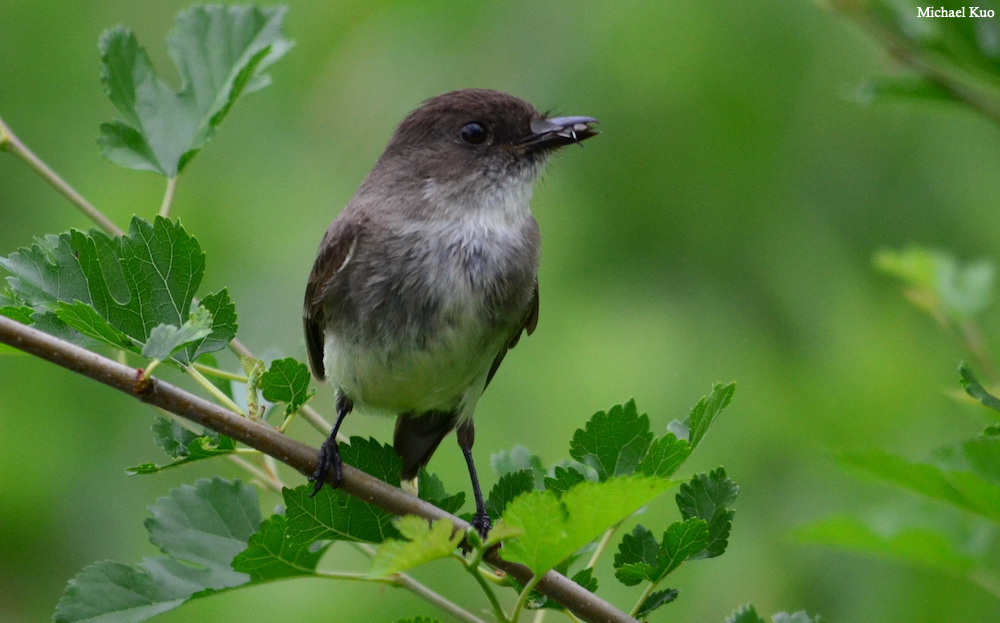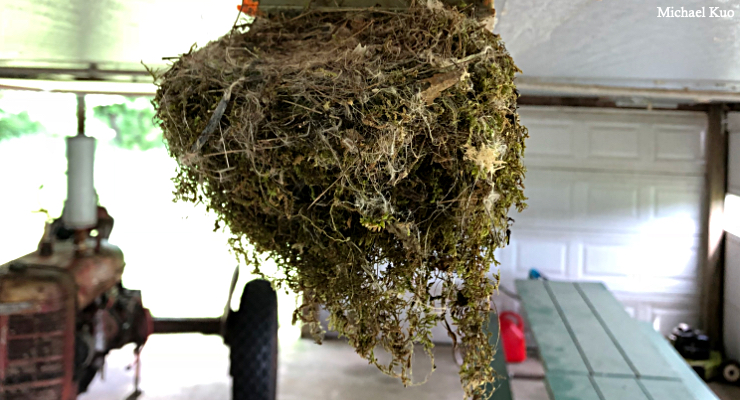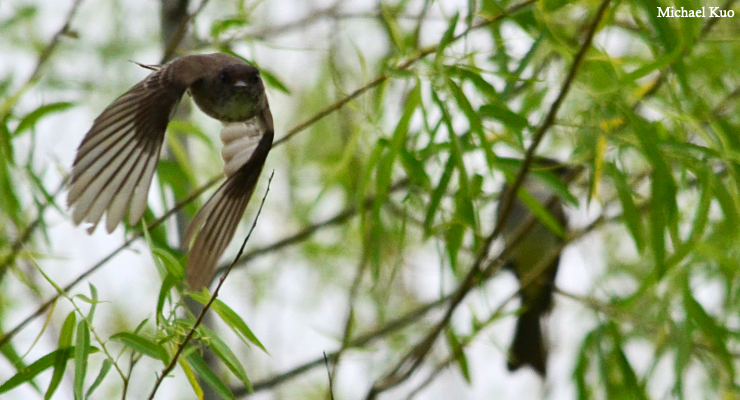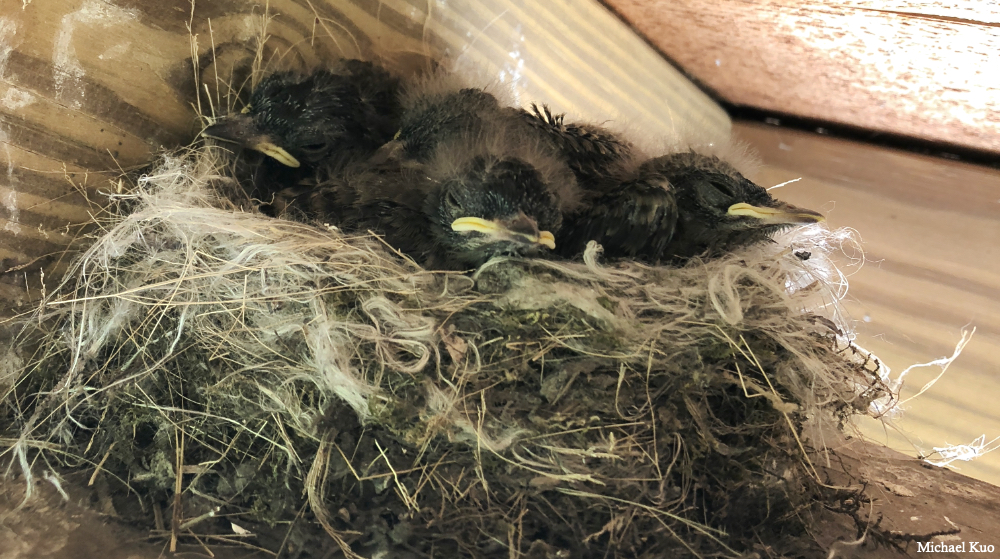 Sayornis phoebe (eastern phoebe) |

|
|
The Midwest provides much of the summer breeding range for the eastern phoebe, Sayornis phoebe, and the little bird makes itself quite at home with its human neighbors. Eastern phoebes love to build their distinctive nests in man-made structures—especially those that are near wooded areas—like park pavilions, gazebos, barns, and bridges. In fact the phoebe's nest is arguably more easily recognizable than the bird itself, since phoebes always incorporate lots of green moss and lichens while nest building. The bird itself is a YAFC ("Yet Another Flycatcher"), but it can be distinguished by its relatively plump stature, often-peaked-looking head, and weak wingbars—along with its squawky, "fee-bee" song and its tendency to hang out near humans. The eastern wood-pewee (Contopus virens) and willow flycatcher (Empidonax traillii) are the closest Midwestern look-alikes; both are smaller and skinnier, have more prominent wing bars, have very different songs, and are less likely to be found near human development. Eastern phoebes are among the first birds to migrate back to the Midwest in spring, showing up in late April or May. |
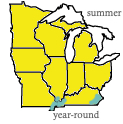 midwestern range |
|
|
|
|
|
|
|
|
References: Jaques 1947, Peterson 1980, Dunn & Alderfer 2009, Sibley 2014, Retter 2017, Weeks Jr. in Rodewald 2018. Kuo, Michael & Melissa Kuo (December, 2018). Sayornis phoebe (eastern phoebe). Retrieved from the midwestnaturalist.com website: www.midwestnaturalist.com/sayornis_phoebe.html All text and images © , midwestnaturalist.com. |
